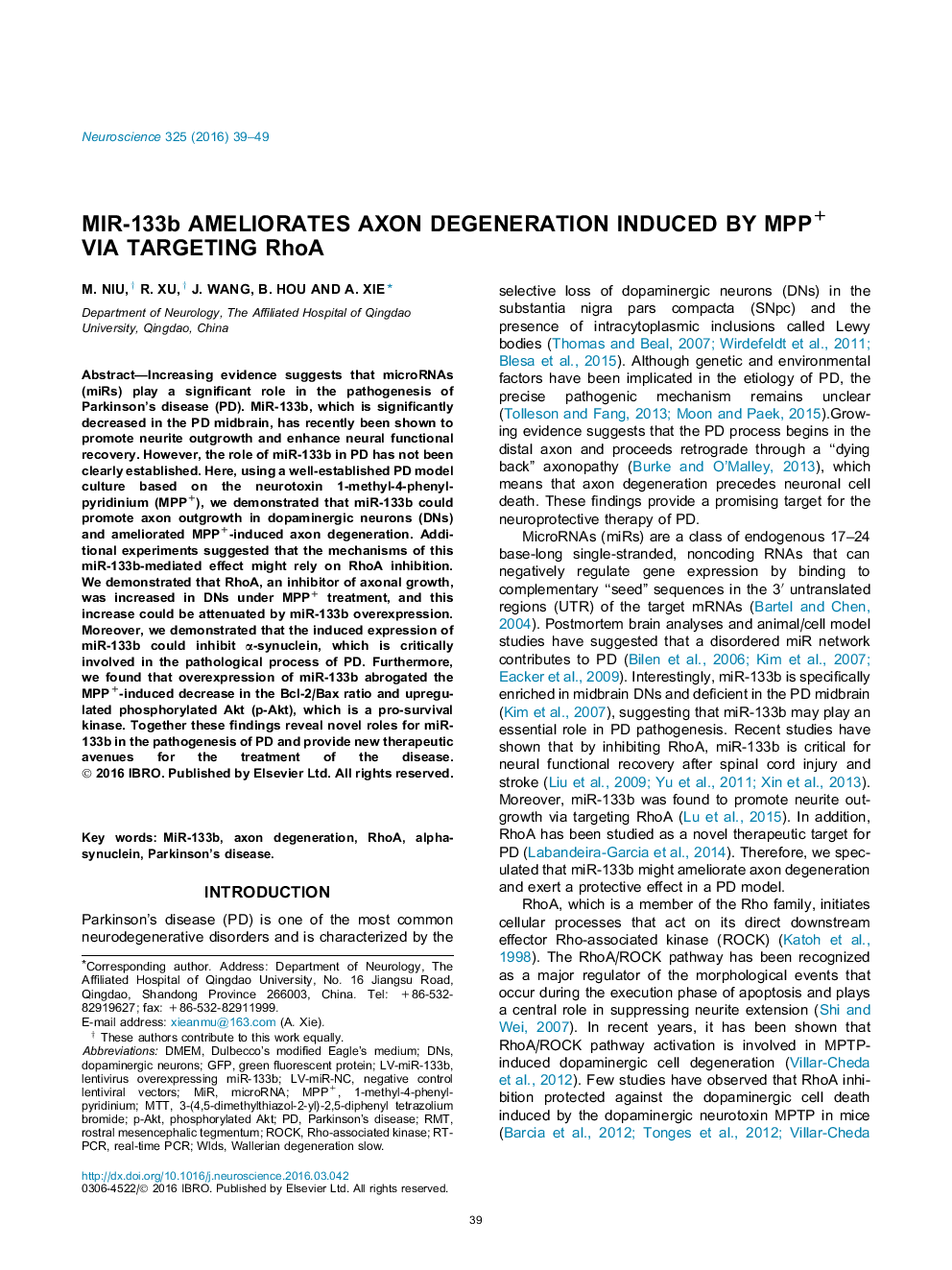| Article ID | Journal | Published Year | Pages | File Type |
|---|---|---|---|---|
| 4337360 | Neuroscience | 2016 | 11 Pages |
•MiR-133b ameliorates axon degeneration induced by MPP+ via targeting RhoA.•MiR-133b inhibits MPP+ induced α-synuclein up-regulation.•Novel roles for miR-133b in pathogenesis of PD are proposed.
Increasing evidence suggests that microRNAs (miRs) play a significant role in the pathogenesis of Parkinson’s disease (PD). MiR-133b, which is significantly decreased in the PD midbrain, has recently been shown to promote neurite outgrowth and enhance neural functional recovery. However, the role of miR-133b in PD has not been clearly established. Here, using a well-established PD model culture based on the neurotoxin 1-methyl-4-phenyl-pyridinium (MPP+), we demonstrated that miR-133b could promote axon outgrowth in dopaminergic neurons (DNs) and ameliorated MPP+-induced axon degeneration. Additional experiments suggested that the mechanisms of this miR-133b-mediated effect might rely on RhoA inhibition. We demonstrated that RhoA, an inhibitor of axonal growth, was increased in DNs under MPP+ treatment, and this increase could be attenuated by miR-133b overexpression. Moreover, we demonstrated that the induced expression of miR-133b could inhibit α-synuclein, which is critically involved in the pathological process of PD. Furthermore, we found that overexpression of miR-133b abrogated the MPP+-induced decrease in the Bcl-2/Bax ratio and upregulated phosphorylated Akt (p-Akt), which is a pro-survival kinase. Together these findings reveal novel roles for miR-133b in the pathogenesis of PD and provide new therapeutic avenues for the treatment of the disease.
Graphical abstractFigure optionsDownload full-size imageDownload high-quality image (73 K)Download as PowerPoint slide
